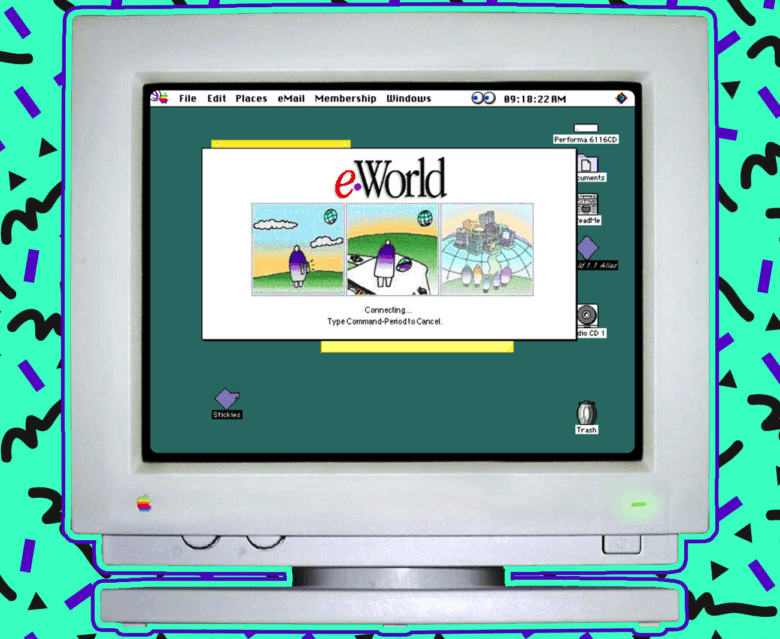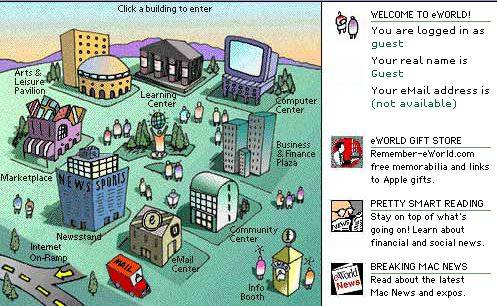Today in Apple history: eWorld closes its virtual doors

March 9, 1996: Apple confirms that it will shut down its eWorld online service at the end of the month.
Part messaging service, part news aggregator — and all with Apple’s customary premium prices — the short-lived eWorld proved ahead of its time. Apple tells eWorld subscribers they can switch to America Online instead.
Apple launched eWorld on June 20, 1994, less than two years before shuttering the service. It represented Apple’s first deep dive into providing internet services. It came several years before Steve Jobs returned to the company and embraced the importance of going online with devices like the iMac G3 and iBook.
The impetus behind eWorld was a proto-social network called AppleLink that connected Cupertino with its dealers and support centers. In the early 1990s, when John Sculley still ran Apple, the company decided to transform this concept into a consumer-facing service.
To pull it off, Apple acquired a data center in the San Francisco Bay Area from banking giant Citigroup. It also came to a licensing agreement with AOL, the company that built the basic technology eWorld was based upon. This was years before Apple launched iTunes, iCloud and other internet-based services.
eWorld: Apple’s first go at the internet

Photo: Apple
Typically for Apple, the idea was for eWorld to be a “walled garden” so Cupertino could totally control the user experience.
Today, Apple’s carefully moderated approach to running the App Store makes it something of a rarity. In the 1990s, however, this was not a big departure from the norm. AOL, Prodigy and CompuServe all attempted to do similar things.
Nobody seemed quite sure yet what the internet would ultimately turn into.
eWorld didn’t just contain material written by Apple. A bit like the Apple News app, it served as an aggregator of news and entertainment from other sources, all filtered through a familiar Apple interface.
Why eWorld failed
Eyeing eWorld now, the big surprise for a lot of people will be how cartoonish it looks. The notion of turning the internet (or, at least, a version of it) into a Sim City-style settlement, with different buildings representing different services, seems very unnecessary — and non-workable — today.
It makes sense, though, when you consider that eWorld narrativized an abstract idea in much the same way the graphical user interface borrowed the metaphor of a physical desktop to explain computing concepts to a new audience. Full web-browsing support didn’t arrive in eWorld until 1995.
The other massive shock for modern audiences will be how expensive eWorld was. Two off-peak hours with eWorld’s dialup service cost $8.95, while hourly costs beyond this (or during the day) set people back $4.95.
These days, Apple typically gauges the right moment to leap on new technologies. Sadly, in the 1990s the company did not seem to possess such perfect timing. eWorld only attracted 147,000 users at its peak.
You can get a more detailed, Flash-based demo of how eWorld operated by clicking here.
Do you remember eWorld? Leave your comments below.




